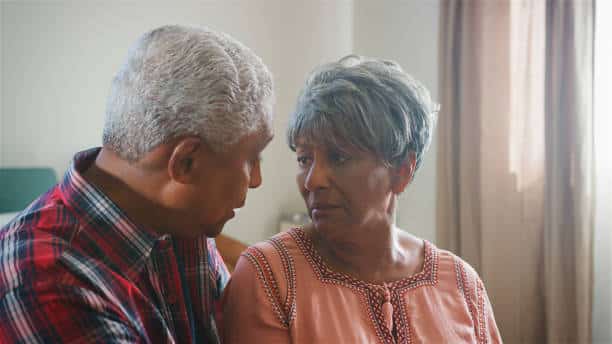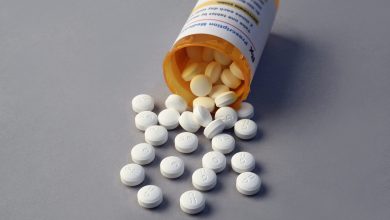Think It’s Alzheimer’s? It Could Be Lewy Body Dementia – BlackDoctor.org


Lewy Body Dementia (LBD) is a brain disease that’s often misunderstood. It’s actually the second most common type of progressive dementia after Alzheimer’s disease (AD).
For patients and families, learning what LBD is, how it differs from other dementias, and how to manage its symptoms can make a huge difference in planning care and finding support.
What Is Lewy Body Dementia?
LBD happens when abnormal protein clumps—called Lewy bodies—build up inside brain cells. These clumps are made of a protein called alpha-synuclein. Over time, they interfere with how brain cells communicate and work, leading to problems with memory, thinking, movement, and behavior.
We spoke with neurologist and author Dr. Carolyn Larkin Taylor, who has treated patients with LBD for over 30 years. In her memoir, Whispers of the Mind: A Neurologist’s Memoir, she shares both medical insight and the deeply human side of caring for people with this condition.
“Treating these patients inspired me so much because of their courage,” Dr. Taylor says. “I wanted to show readers that we all share a common humanity—and that the human spirit is more resilient than we ever knew.”
RELATED: Is it Alzheimer’s or Forgetfulness? 5 Signs to Tell
Why Getting the Right Diagnosis Matters
LBD and Alzheimer’s both cause memory loss and confusion, but they affect the brain in different ways and often progress differently. Knowing which type of dementia you’re dealing with helps families plan and understand what to expect.
“People sometimes think dementia is just dementia—but it’s important to know which kind. Each type has different symptoms and needs. An accurate diagnosis helps families better manage care and support,” Dr. Taylor explains.
It’s also worth noting that LBD and Alzheimer’s can occur together, which makes diagnosis more challenging. The only way to confirm LBD for sure is by examining brain tissue after death, but doctors can make a strong clinical diagnosis based on symptoms.
RELATED: Alzheimer’s vs. Other Dementias: What’s the Difference?

Key Symptoms of Lewy Body Dementia
LBD often shows up with both memory problems and movement issues similar to Parkinson’s disease. Doctors look for several hallmark signs:
1. Fluctuating Attention and Awareness
People with LBD can have dramatic ups and downs in their alertness—one moment they’re engaged and clear, and the next they’re drowsy, staring, or confused.
2. Visual Hallucinations
Seeing things that aren’t there (like people or animals) is very common. These hallucinations can be vivid and realistic, and sometimes frightening.
3. Parkinson-Like Movement Symptoms
Many patients develop slowness, stiffness, and balance problems. Tremors may or may not occur.
4. REM Sleep Behavior Disorder (RBD)
This can be one of the earliest signs of LBD. People physically act out their dreams—talking, shouting, punching, or kicking during sleep. Sometimes they fall out of bed or accidentally hurt their bed partner.
“Patients often describe dreams where they’re fighting off an attacker,” Dr. Taylor says. “Bed partners may report being hit or kicked, and sometimes the person wakes up on the floor.”
LBD is more common in men, possibly because estrogen may help protect women’s brains from the buildup of these abnormal proteins.
Why LBD Is Often Misdiagnosed
LBD shares symptoms with both Alzheimer’s and Parkinson’s diseases, as well as certain psychiatric conditions. This overlap can make diagnosis tricky.
- With Alzheimer’s: Many people with LBD also have Alzheimer’s changes in the brain, so both memory loss and hallucinations can occur.
- With Parkinson’s Disease Dementia: The “1-year rule” helps doctors tell them apart.
- If memory and thinking problems appear before or within a year of movement symptoms → it’s likely LBD.
- If those problems appear after a year or more of Parkinson’s symptoms → it’s called Parkinson’s Disease Dementia.
- With Psychiatric Disorders: Because hallucinations and delusions can be severe, some people are first referred to a psychiatrist. However, standard antipsychotic medications can make LBD symptoms worse.
“When patients with LBD are given typical antipsychotics, their symptoms often get worse,” Dr. Taylor says. “That’s an important clue that it’s not a primary psychiatric disorder.”
Caring for Someone with LBD
There’s currently no cure for LBD, but many symptoms can be managed with supportive care and understanding. The main focus is keeping the patient safe, comfortable, and emotionally supported—while helping caregivers avoid burnout.
1. Managing Hallucinations and Confusion
- Stay Calm and Reassuring: When a loved one sees things that aren’t real, calmly acknowledge their experience without arguing. For example, call the hallucinated figures “visitors” and remind them they’re not harmful.
Continuous reassurance is key,” according to Dr. Taylor.
- Create Structure: Keep a daily routine with familiar activities and supervision to reduce anxiety.
- Improve Lighting and Senses: Make rooms well-lit and address any hearing or vision issues.
- Be Careful with Medications: Avoid standard antipsychotics and drugs like Benadryl or certain cold medicines, which can worsen confusion. Some Alzheimer’s drugs (like donepezil) can help with memory and mood.
2. Managing Sleep and Caregiver Health
- Treat Sleep Problems: If REM sleep behavior disorder is dangerous, melatonin at bedtime may help.
- Focus on Quality of Life: Hallucinations and mental fluctuations often cause more trouble than movement problems.
- Caregiver Self-Care: Taking breaks and asking for help is essential.
Eventually, many patients will need care in a specialized facility that understands LBD.
Looking Ahead
Research into LBD is growing fast. Scientists are working on ways to diagnose it earlier and develop treatments that stop the buildup of alpha-synuclein in the brain.
While there’s no cure yet, there is real hope for the future—and plenty that families can do right now to improve quality of life and keep loved ones safe, understood, and supported.




